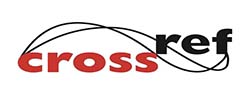Author: Supneet Kaur, A. K. Singh, Sreshti Bagati, Mamta Sharma, Satish Sharma
Keyword: Genetic diversity analysis, Morphological traits, cluster analysis, ANOVA, genetic advance.
Abstract: Assessment of genetic diversity in any crop species provides a basis for devising future strategies for crop improvement; conservation and sustainable use. An experiment consisting of 24 genotypes of Tomato was conducted during the year 2016 at the Research Farm and Molecular Biology Laboratory of School of Biotechnology, SKUAST-J, Chatha. The experiment was conducted in Randomised Block Design (RBD) with three replications in 2 rows of 5m length with spacing of 45 x 90 cm. The extent of genetic divergence /relatedness was estimated among 24 genotypes by using 11 traits viz. plant height (cm), number of branches, number of fruits per bunch, total soluble solids, flesh thickness (mm), number of locules, fruit width (cm), fruit length (cm), yield per plant (g), average fruit weight (g), number of fruits per plant. The maximum number of fruits/bunch was recorded in “Utkal Pragyan” (3.66) and the minimum number was recorded in “Swarna Sampada” (2.03). Maximum TSS(%) was recorded in DCT-1 (8.06%) and minimum TSS was recorded in “Dhanshri” (2.83%). Maximum number of fruits and yield/plant was recorded in “DCT-1” (115.33) and “Hisar Lalit” (2507.36g), respectively. The minimum number of fruits and yield/ plant was recorded in “NDT-4” (23.20) and “DCT-1” (861.40g), respectively.Mean data revealed high range for most of studied traits. Hierarchical cluster analysis allowed the assessment of similarity and clarified some of the relationships among tomato genotypes. UPGMA produced a dendrogram with two main clusters with further sub clusters. Of all the studied 24 genotypes Anand tomato and Hisar lalit were found to be most dissimilar based on UPGMA clustering. Hisar lalit was found to be most promising variety among all the genotypes for most of the traits under study, which can be used for further breeding and crop improvement programmes.
| Total View: 2333 | Downloads: 695 | Page No: 567-573 |
Cite this Article:
MLA
Supneet Kaur, A. K. Singh, Sreshti Bagati, Mamta Sharma, Satish Sharma, P.(2018).Morphological Markers based Assessment of Genetic Diversity in Cultivated Tomato (Solanum Lycopersicon L.) Genotypes. International Journal of Environment Agriculture and Biotechnology(ISSN: 2456-1878).3(2), 567-573.10.22161/ijeab/3.2.34
Supneet Kaur, A. K. Singh, Sreshti Bagati, Mamta Sharma, Satish Sharma, P.(2018).Morphological Markers based Assessment of Genetic Diversity in Cultivated Tomato (Solanum Lycopersicon L.) Genotypes. International Journal of Environment Agriculture and Biotechnology(ISSN: 2456-1878).3(2), pp.567-573.
Supneet Kaur, A. K. Singh, Sreshti Bagati, Mamta Sharma, Satish Sharma. 2018."Morphological Markers based Assessment of Genetic Diversity in Cultivated Tomato (Solanum Lycopersicon L.) Genotypes". International Journal of Environment Agriculture and Biotechnology(ISSN: 2456-1878).3(2):567-573.Doi:10.22161/ijeab/3.2.34
Supneet Kaur, A. K. Singh, Sreshti Bagati, Mamta Sharma, Satish Sharma."Morphological Markers based Assessment of Genetic Diversity in Cultivated Tomato (Solanum Lycopersicon L.) Genotypes", International Journal of Environment Agriculture and Biotechnology,vol.3,no. 2, pp.567-573,2018.
@article { supneetkaur2018morphological,
title={Morphological Markers based Assessment of Genetic Diversity in Cultivated Tomato (Solanum Lycopersicon L.) Genotypes},
author={Supneet Kaur, A. K. Singh, Sreshti Bagati, Mamta Sharma, Satish Sharma , R},
journal={International Journal of Environment Agriculture and Biotechnology},
volume={3},
year= {2018} ,
}
























